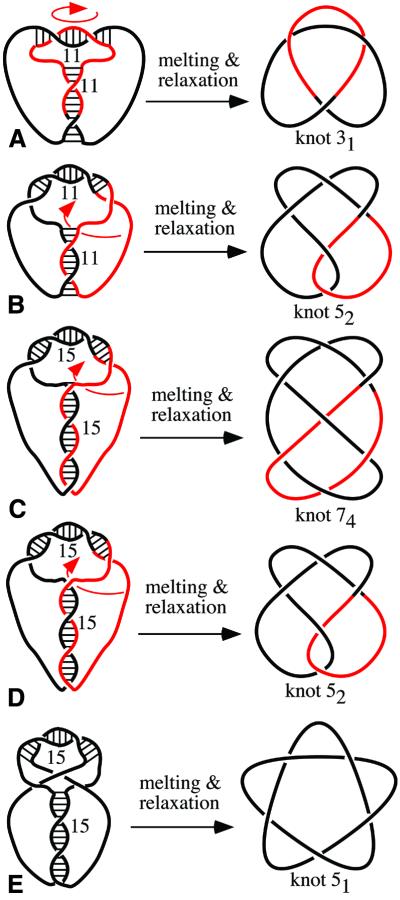Figure 5.
Formation of two or three different knots from the same substrate. (A and B) Notice that pairing in the loop region extends in both cases over 11 bp and that in both cases the regular right-handed helix is formed in the loop region. The resulting knots are therefore almost equally likely to be formed and, in fact, that was what we observed (see Fig. 3A and C). (C–E) Notice that (C), (D) and (E) differ only in ‘phasing’ of crossings in the 15 bp long stem. In (C) pairing starts after the first crossing, in (D) a base or two pair before the first crossing and in (E) four or five bases pair before the first crossing. These differences determine how the out-coming ends exit the stem to pair within the loop. Notice that in (E) the out-coming ends have to cross-back as otherwise their polarity is not compatible with pairing in the loop. In (A–D) arrows show which type of movement of the colored portion needs to be performed to obtain standard representations of knots. In the case of (E) we invite readers to take a string or rubber tubing and perform the transition from the left to right and contrary.

